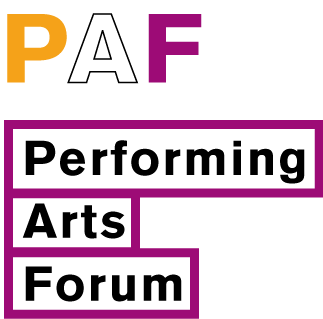
PAF about its organizational and structural principles (2006)
Submitted by jan ritsema on Mon, 2006-10-09 19:54
A conference on Selforganisation in september 2006 in Belgrade formulated a series of questions to be answered by different organisations who tend to implement a certain level of selforganisation.
Kroot Juurak and Alice Chauchat answered for PAF.
QUESTIONS
Name/title of organization: PAF (Performing Arts Forum)
Legal status:
What is the format/legal status of your organization?
The building is privately owned; there is no official organization for the participants; we are setting up a legal association to arrange money and setting the house to security standards. We will thus make separate answers for the next questions, on the one hand about PAF the non-formal organization, and on the other hand about the legal association.
The association is a non-profit association (French law 1901) involving 6-8 people that take care of the financial maintenance of the house and are responsible for PAF remaining an open structure available to everybody for self-motivated artistic residencies.
Geo-political territory:
Where is your organization based? Saint-Erme, France
Is it local, regional, or international organization? International
Organizational structure:
What are the rules of/in your organization?
- Anybody can use the house for artistic processes on the condition of paying a participation to the costs (rental costs)
- Everyone is responsible for their own activities
- Everyone makes things possible for others
How do you produce these rules?
These rules are the fundament of the whole PAF project, and entail that no other rule should be made
Do you aim at creating a non- or less-organized organization? If yes, how do you do?
Yes; in order to organize as little as possible, we follow the principle: the one who does decides
Is there a core group? Is the core group flexible?
The users who engage on a more regular basis take more responsibilities than others; this group is not set though, and varies depending on each person's availability and decision.
The legal association (6-8 persons) is responsible for financial matters; these members are renewed every 3 years.
Do you consider the structure of your organization utopian model? If yes, how?
Yes; in opposition to the pragmatic model of representative democracy in which some persons are entitled to represent others, PAF relies on participative democracy as the promise of a structure based on desire rather than contracts
Decision making:
How is the decision-making process organized? How do you produce these rules?
- everybody's informed about decisions to be made via the mailing list
- anyone can make decisions, power is distributed by commitment.
- ultimately, those who involve decide
What are the practices of openness, transparency, sharing in your organization? Are these important?
Openness is important for people to be able to exchange with others
Transparency is important so that power stays fluid and responsibilities can be shared
Economic situation:
How do you ensure sustainability for your project?
In order to maintain the building:
- rents paid by users ( 7 nights- 70 euros, 5 nights- 75, 10 nights- 100 euros. One month 250 euro. Persons benefiting from a grant pay the double amount)
- with donations (friends of paf: association collecting donations)
- with subsidies (private and public)
Are you funded from project to project or permanently?
At the moment there is no reliable or sufficient funding for the project.
How do you deal with money: how do you write the applications; how do you re-distribute money?
Applications are written by those who commit. Money is used to ensure that PAF can continue, by renovating the house, setting it up to security standards and equipping it with more work facilities.
Is it possible that the founders don’t remain at the core of your organization? Is this desirable?
PAF was founded with the idea to be an organization that includes change in its basic structure.
Jan Ritsema started with inviting 30 people, then 100 came in the next 8 months and out of these different individuals and organizations engage on different levels, taking different responsibilities. This expanding process implies that different people can take over the responsibility of maintaining PAF, as long as its principles remain unchanged.
Content:
In which field of art/culture/society do you work?
Contemporary art and theory
Is your organization platform of projects, organizations/groups, or individuals?
It is a platform for individuals and groups to carry out projects.
What do you produce: relationships or products?
We produce conditions for both relationships and products as there can be no products without relationships.
Do you want self-organization to support your art or do you want it to change society?
We assume that art is not personal and is a potentially changing force in society. We are developing a social model that also questions our relationship to art and to each other, so that art can change.
Outside relationships/ representation:
How do you decide on who is in / who is out?
People decide for themselves.
Do you accept memberships? Who can apply?
There is no membership.
Do you inform people about your organization models? If yes, whom and how?
The model and organization of PAF is spread mainly through word-of-mouth by people that have been there, e-mail PDF files and also through the web-site.
Who represents your organization?
PAF is represented by the people who decide to do so and organize contexts for doing it
Is your organization based on principles of representation?
No; it is based on participation and interest
Are you interested in networking/exchange with other self-organizations in Europe?
Yes
Answers by Kroot Juurak and Alice Chauchat, oktober 2006


